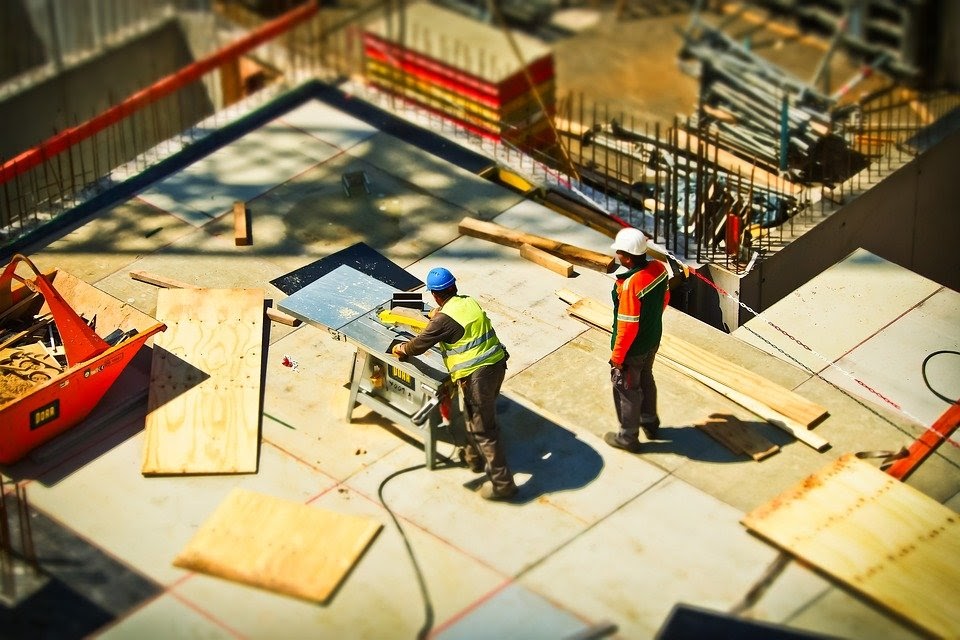After a tough period of changing client expectations and adjusting to the shift in demands, 2022 is expected to be a year of growth and reemergence for the construction industry. Though the industry faces many challenges, the positive side is that the flow of competitive and innovative new ideas in the construction market is more prevalent than ever.
Market shifts and increasing competition has made it imperative for construction firms to leverage construction trends. Here’s a list of top construction industry trends that’ll help you maintain a strong foothold in the market.
1. Increased use of 3D printing in the construction industry
3D printing is changing the game in the construction market by allowing construction experts and architects to print buildings in a more timely manner. Its increased use is helping professionals save time and effort. Unlike traditional methods, they need not spend hours building prototypes.
Interestingly, the concept of 3D printing has been rounding off the market since the 1980s. However, it has grown in popularity in the construction industry only recently. This is due to multiple reasons, such as improved 3D materials and printers, an increase of interest from engineers and architects in the technology, and growing 3D-printed product options.
2. The use of drones in the construction process
The construction industry is now reaching a new level of growth with the help of Drone Videos. The benefit of this technology includes (but isn’t limited to) aerial photography and videography for commercial benefits or real estate.
Highly advanced drones are perfect for mapping long distances and large areas. They’re also capable of producing valuable thermal images and heat maps. And to top it off, advanced drone software allows users to make use of real-time data based on the actions and decisions taking place at various levels, which aids in streamlining the construction process.
3. Exposure to remote worksites through mobile applications
The use of mobile applications in construction projects isn’t something new, but the use has grown extensively this year and will continue to rise in the future. Expertly crafted applications provide users with on-site integrity, real-time inspections, and accurate measurements from their mobile devices.
This facility allows teams to collaborate without access to space, equipment, and the ability to meet team members in person. Applications allow individuals to work remotely. Moreover, mobile apps also allow users to conduct group meetings and make important decisions.
4. The emergence of new-gen architects
The entry of new-gen architects will prove to be a game-changer for the industry and make the profession more exciting. This generation brings a whole new set of innovative ideas and perspectives to the building and construction market, introducing building materials to achieve the intricacy required in design and construction.
5. Green construction through advanced technology
Constructing green buildings involves using advanced technology to reduce carbon footprints. Plus, it also involves using smart building models to eliminate the use of resources that either aren’t unneeded or have a higher carbon footprint. Thanks to the advancement and growth of technology, architects and construction experts can dream of constructing eco-friendly buildings today.
Although eco-friendly options still don’t fit the budget of many, the good part is that the construction industry is looking for solutions to make green construction affordable for all its clients.
6. Better safety measures to reduce workplace fatalities
Although it may not be counted as a new trend in the building and construction industry, architects and experts have started focusing on safety measures more than ever. Today, construction experts invest more in advanced safety equipment like IoT devices and wearables.
These gadgets help reduce onsite injuries by mapping the biometric conditions of users. For example, if a construction expert falls, smart devices will send instant alerts to management, along with the person’s exact location.
7. Augmented reality in construction and building
Increased use of augmented reality helps elevate project-staging efficiency and adds tangibility to preconstruction projects for both tenants and buyers. AR-based wearable technology allows developers and builders to leverage the benefits of 3D visualization for future building projects. Plus, they also get a “real picture” of the environment created.
AR also automates the process of measurements required in building construction. Plus, it promotes affordable and fast simulation of structural and architectural changes.
8. Construction management software for achieving better operational efficiency
Construction management software is an essential tool that enables construction companies to remain competitive, master operational efficiency, and build a valuable business. However, software services, offerings, and features differ.
An efficient construction management software allows users to accumulate relevant data, share files with teams, prepare a budget, monitor inventory, and document HR, storage, and payroll. However, to get the best out of it, construction companies should invest in the right software to fit their company’s needs. Evaluate the features, customization options, and upgrades. Plus, check for training and support provided by the platform.
9. Automation for increasing productivity and efficiency
Automation increases the efficiency of construction sites. Drones, self-driving vehicles, and other similar assets can perform multiple tasks in a go. They help speed up work at construction sites and improve accuracy and productivity while saving time and effort. With automation in place, workers can easily focus on core tasks while robots and drones handle the repetitive tasks.
Endnote
Construction projects include various dynamic parts. Controlling multiple elements in one go isn’t practically possible for construction professionals and on-site workers. All of the above trends contribute to a project’s success and help ensure smooth workflow and operations. Using VR, AR, AI, IoT wearables, and robotics brings processes, information, and people together, which is important for optimizing the overall construction process.

